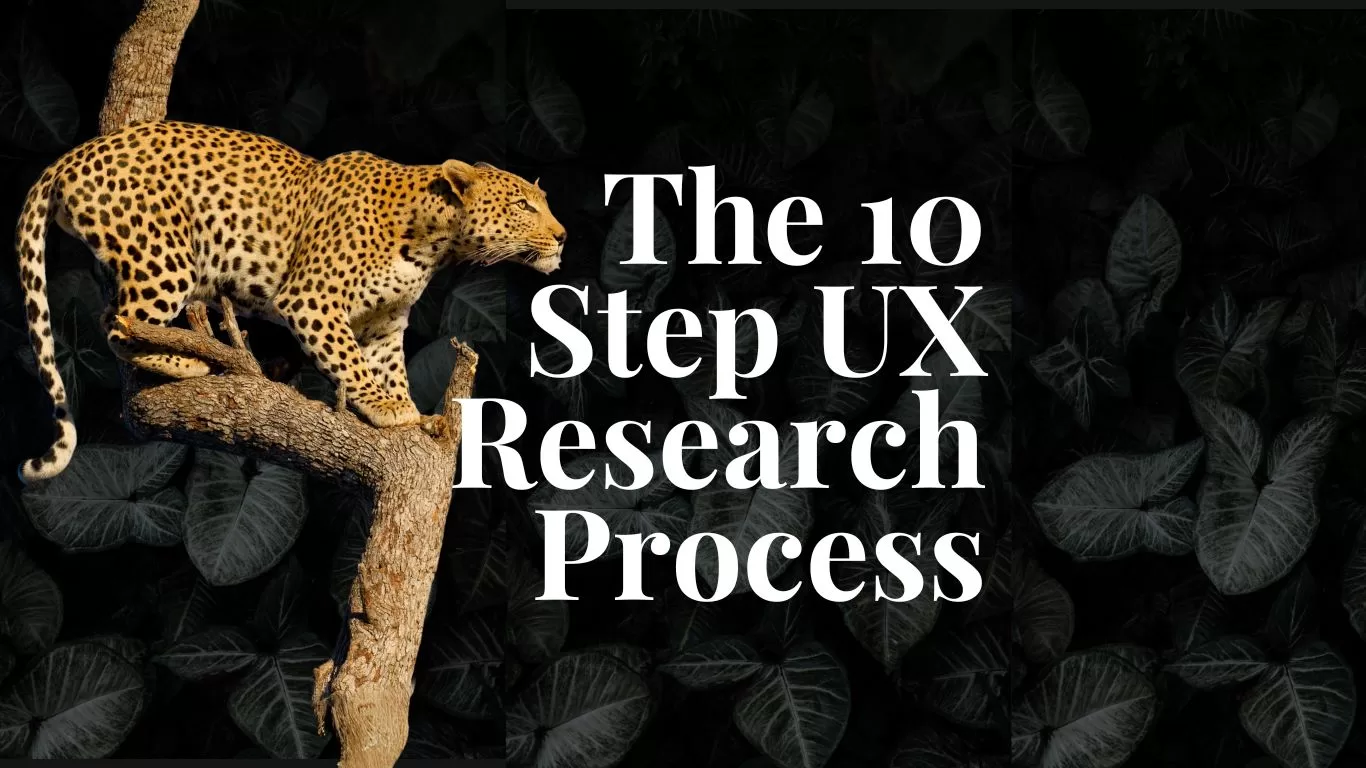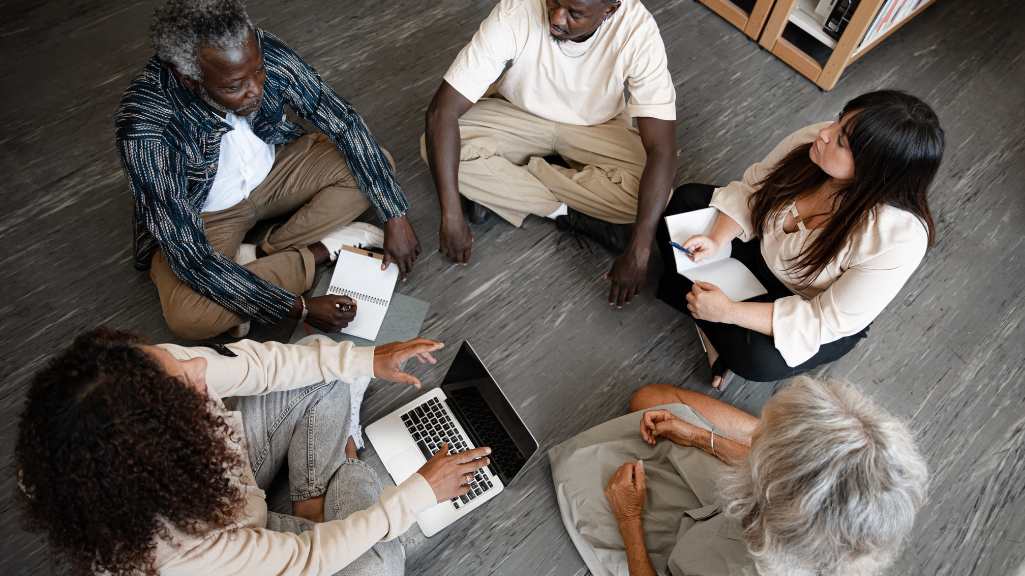Conducting user experience (UX) research is a vital process in designing products that meet the needs of users.
In order to carry out this process effectively, there are three key phases that should be followed: Discovery, Design, and Development.
During the Discovery phase, researchers gather information about user needs, behaviors, and preferences. The Design phase involves creating prototypes and testing them with users to refine the product.
Finally, the Development phase involves building and testing the final product to ensure it meets the needs of users and is easy to use. Following these three key phases is essential in creating a successful product that meets user expectations.
The product design phases focus on four critical methods of user research:
- Discovery interviews
- Concept testing
- Usability testing
- Prototype testing
Table of Contents
The discovery phase of UX research Process
Before beginning the research, you’ll want to identify the key goals you hope your UX research will achieve.
1. A research kick-off meeting
Goal: Define the problem you want to test.
To have a kick-off meeting, all you need is a concept or idea you want to explore and an understanding of the team members that should be involved.
Whether this idea comes from Design, PM, ENG, or your customers, it’s great to have a meeting to start understanding the problem you’re looking to solve further.
During this meeting, you will discuss the problem space and map any assumptions or biases you have upfront. During the meeting, you’ll want to answer these questions:
- What do you know about the problem?
- What don’t you know about the situation?
- How are users solving the case today?
- Who are the people you are expecting to talk to in this research study?
- And what are you hoping them to think about the situation?
Write out the things your teammates say during this meeting on sticky notes. Use those sticky notes to form your problem hypothesis. You will use that problem hypothesis to formulate a research question that you want to pursue.
Deliverables to complete:
- Hold an hour-long kick-off meeting.
- Align knowledge gaps and discuss biases.
- Identify key stakeholders
- Write out a problem hypothesis.
2. Define your research plan
Goal: Prepare for your discovery interview.
- Discovery Interviews (learning) — Having conversations with participants to understand if they even have the problem you are hypothesizing around and what might be contributing factors. These are more general conversations around workflows, pain points, etc. No designs are shown.
- Concept Exploration (learning) — To fully understand the problem, we actively discuss it with the involved parties. We then present a set of meticulously crafted concepts and require constructive feedback.
- Prototype test (testing) — Understanding how this design works. Live interactive prototypes are shown.
- Usability test (learning/testing) — Discovering if you have designed the correct thing for the user, can the user understands it, and did you miss anything. Designs showed.
Deliverables to complete:
- Select a research outcome.
- Work with stakeholders to define how the success of this research will be measured.
- Decide with team members on participant selection criteria: what qualifies or disqualifies them from participating? Ask if they should have previous experience or knowledge about the subject. Where will you recruit them from?
- Decide who is responsible for the recruitment of users, along with the organization and scheduling of tests.
- Set clear expectations set to everyone’s involvement with the plan.
3. Execute your research plan
Goal: Prepare for discovery interviews.
In the previous step, discuss who is responsible for recruitment, who is setting up tests, and who is the main point of contact for communicating with users.
Also, discuss all the logistics of conducting the call. Who is doing introductions, leading the ring, and taking notes? Where are you taking notes, and in what format? Set up 4–5 discovery interviews with actual users.
You should also develop a discussion guide you will use during these interviews.
It’s good to get all of the questions your cross-functional team wants to be answered out in the open right up front and then work with UX research partners to refine the script to make sure it flows and poses questions in a non-leading way.
Deliverables to complete:
- Schedule interviews
- Develop an interview script or discussion guide.
- Prep your team
- Run a pilot test with a sample participant to ensure that the test materials, writing, etc., make sense when someone unfamiliar with the project encounters them.
4. What to do on the day of your research calls
Goal: Have the call.
During your research calls, you will validate or disprove your problem hypothesis while exploring users’ pain points and needs around that problem.
After each call, share the main takeaways and key findings that stood out to you; this makes it easy to ensure no one is missing anything.
Set aside five minutes after each call so that you and your colleagues all stay on the line or have a Slack conversation/email.
Deliverables to complete:
- Have the discovery interviews
- Immediately the following call debriefs for 5 minutes.
5. Debrief and analyze
Goal: Ensure everyone hears the same thing and your test is working.
As mentioned above, it’s excellent to debrief for just five minutes after every call; however, it’s even more important to have a meeting once the first round of interviews is finished to discuss your findings. It would be best to take this chance to reflect on whether you are getting the correct data with your chosen research method.
Read back through all your notes and use methods like affinity mapping to analyze the findings. Doing a post-it note affinity mapping exercise with PM and ENG would be great so everyone can discover any critical insights. Then, take those findings and turn them into requirements you can design off of.
For each of the below types of tests, here are the guiding questions for you to debrief after:
- Discovery interview: Is this a problem we should be fixing? What are the issues in this space?
- Concept testing: Are our ideas for solving the problem by meeting the user’s needs?
- Usability test: What do users want to be able to do with this tool?
- Prototype test: How does this design work to meet their needs?
After answering these questions, decide how confident you are about the findings and the conclusions on the next steps. There may need additional testing at this stage on the testing materials, participant type, protocol, or mock-ups.
Deliverables to complete:
- Debrief on results of tests so far
- Debrief on interview style
- Create rough design requirements from the research.
- Create summaries of research.
- Share out with other designers/researchers.
The design phase of UX research
6. Design mocks
Goal: Take your recommendations and turn them into researched design decisions.
In this phase, the mock-ups you create should align all stakeholders on what you learned from research and a direction for your design.
The fidelity of these mocks is less critical as long as the concepts in the workflow are communicated. Once you have a set of mocks, you can do another round of testing with users.
Output:
- Designed mocks at the appropriate level of fidelity
- Create a persuasive data narrative that sets up your design changes for non-design stakeholders so that you can communicate your design decisions.
7. Test concepts
Goal: Put those mocks in front of stakeholders and users.
In this round of testing, you might still be doing some concept validation; occasionally, something may sound good to a customer until they see it.
This could result from your misinterpreting their feedback, or it could be a sign that your concept must solve the correct problems for the user.
If your idea is validated, move on and begin testing the usability of the experience you have designed.
Deliverables to complete:
- See section 3 for recruiting users and prepping for testing.
- Conduct a second round of calls with a mix of the new and past users you tested with
8. Debrief and iterate
Goal: Debrief from concept testing and decide if you are ready for usability testing.
Refrain from dwelling too much on a couple of people’s feedback. Ensure you get at least three concept tests before pushing your mock-ups in any direction.
Once all tests are conducted, do a design iteration based on this round of feedback. You may discover that you must pivot your designs…or be right on the money.
These edited mock-ups are either for additional concept testing or to move on to usability testing. If you are moving on to usability testing, decide what design fidelity you can build for the usability tests.
Deliverables to complete:
- Make refinements to your concept based on testing results.
- Decide if you need more concept testing or are ready to move on to usability testing.
The development phase of UX research
9. Prototype or retest new mocks
Goal: Iterate your designs to produce a more informed set of mock-ups.
In this process phase, you will have gotten enough viable feedback on your mock-ups to hand to ENG to prototype or work on an interactive prototype using a prototyping tool.
You will benefit from a clickable prototype if you have complex interactions and new UI patterns. Prototypes often help users view a new feature in their workspace context to hypothesize better how to use it in their regular workflow.
This is the first step in the development phase of UX research because everything you just learned in the previous prototyping phase can significantly impact how quickly and smoothly development can be done.
Prototyping can also help you “sell” concepts and features to critical stakeholders. By demoing live prototypes, they can easily see the value of the changes you are pursuing.
Deliverables to complete:
- Explore prototype creation tools.
- Spend time illustrating to stakeholders the value of prototyping.
- Handoff mocks to engineers to prototype
- Support ENG so that they understand the essential features of the prototype to test
- Cycle back through another round of research using the prototype.
10. Release your design and listen for feedback
Goal: Decide how you’ll be measuring success and listen for feedback.
Before launching your experience beyond the testing phase, it is essential to collaborate with your PM and ENG teams to establish the metrics that will be utilized to evaluate the feature’s success.
Schedule a review with your development team to review the design and ensure it is implemented correctly. Also, if this option is available to you, work with ENG to define precisely what you need tagging in the UI to get the data to support your success metrics.
Once released, discover what customers say about your new feature or experience. Consider setting up several calls with users to understand better how they use the new feature. This may inform a V2 of your design.
Deliverables to complete:
- Review designs with ENG to make sure your methods were implemented correctly.
- Read forums about your features.
- Check analytics on how a feature is performing.
- Set up feedback release calls.
Read more articles exploring the dynamic interplay between design, user experience, artificial intelligence, and technology here.





Leave a Reply